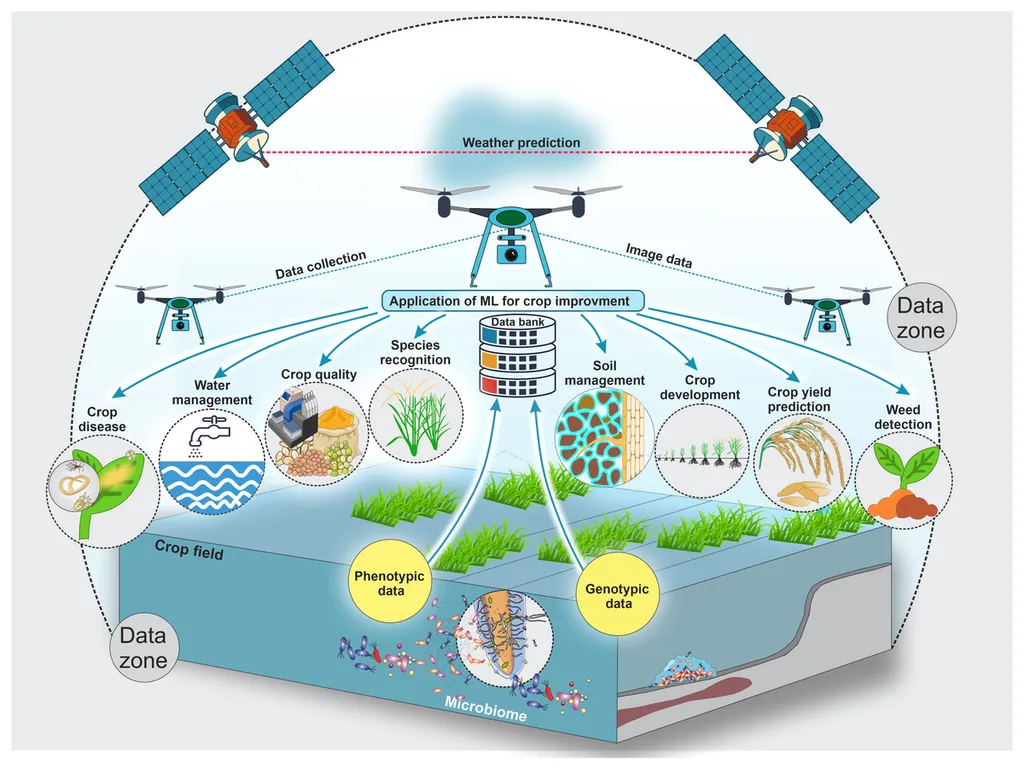In the heart of Virginia, researchers are making strides in precision agriculture that could reshape how we approach crop yield prediction and optimization. Anne Alerding, a biologist from the Virginia Military Institute in Lexington, has led a study that combines image processing and machine learning to identify high-yield phenotypes in soybeans. Published in the journal *Agrosystems, Geosciences & Environment* (formerly known as *Agronomy Journal*), this research offers a glimpse into the future of agricultural technology and its potential commercial impacts.
The challenge of accurately estimating fruit and seed yield in standing crops has long been a hurdle in precision agriculture. Soybean pods, in particular, are notoriously difficult to distinguish from stems, leading to inaccurate yield predictions. Alerding and her team tackled this issue head-on, developing image analysis tools to estimate morphological traits in the vertical canopy profile that correlate with high seed yield.
Using common image processing methods like thresholding and particle analysis, the researchers found that higher circularity of the shoot convex hull vertical profile was a key indicator of high seed yield. This discovery was consistent across both indeterminate and determinate soybean cultivars, each achieving high yields through different growth strategies. “Glenn, a determinate cultivar, had a smaller shoot but exhibited a high pod density phenotype throughout its canopy,” Alerding explained. “On the other hand, P49T80R, an indeterminate cultivar, achieved high yield through increased height and greater branching width, compensating for lower pod density in its branches.”
The team took their research a step further by training a deep machine learning model to automate shoot phenotyping. Using nearly 400 images of soybean shoots, the model distinguished between the two phenotypes with an overall accuracy of 80%, reaching up to 95% accuracy for shoots exhibiting the PT2 phenotype.
The implications of this research are significant for the agricultural sector. By automating the identification of high-yield traits, farmers and agronomists can make more informed decisions about crop management and breeding programs. This technology could lead to increased productivity and efficiency, ultimately benefiting the entire agricultural supply chain.
Alerding’s work highlights the importance of including pod density positioning in machine learning training models, a factor that has often been overlooked in the past. As the agricultural industry continues to embrace digital technologies, this research paves the way for more sophisticated and accurate yield prediction methods.
In the broader context, this study underscores the potential of machine learning and image processing to revolutionize precision agriculture. As Alerding puts it, “Our work illustrates real-world application of image analysis technologies to identify high-yield trait analysis in field-grown soybeans.” The commercial impacts of this research could be far-reaching, from improving crop yields to optimizing resource use and reducing environmental impact.
As we look to the future, the integration of advanced technologies like machine learning and image processing into agricultural practices holds immense promise. Alerding’s research is a testament to the power of innovation in driving progress and shaping the future of agriculture. With continued investment and collaboration, we can expect to see even more groundbreaking developments in this field, ultimately benefiting farmers, consumers, and the environment alike.

